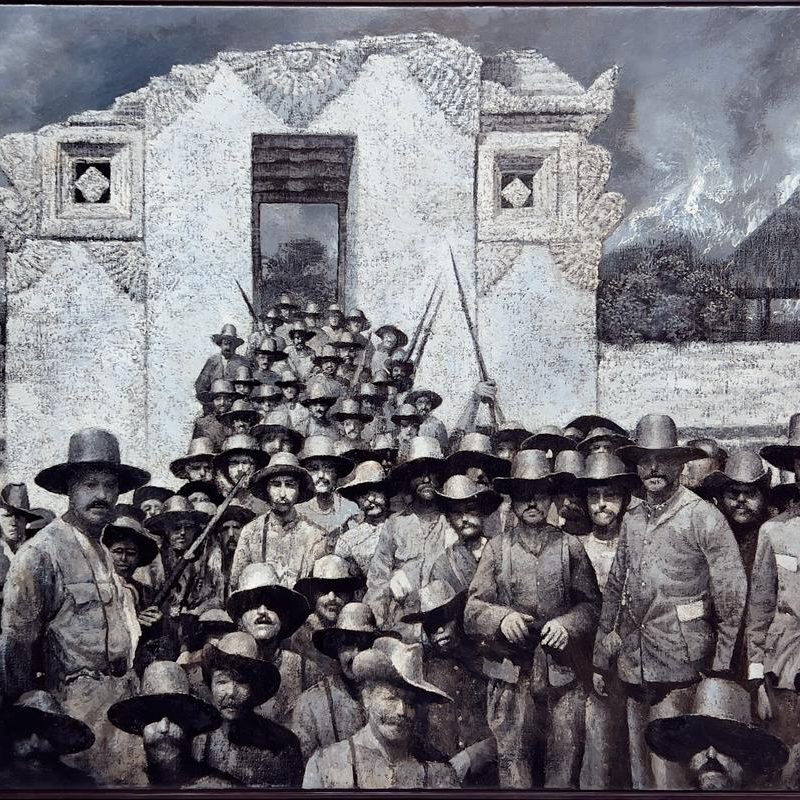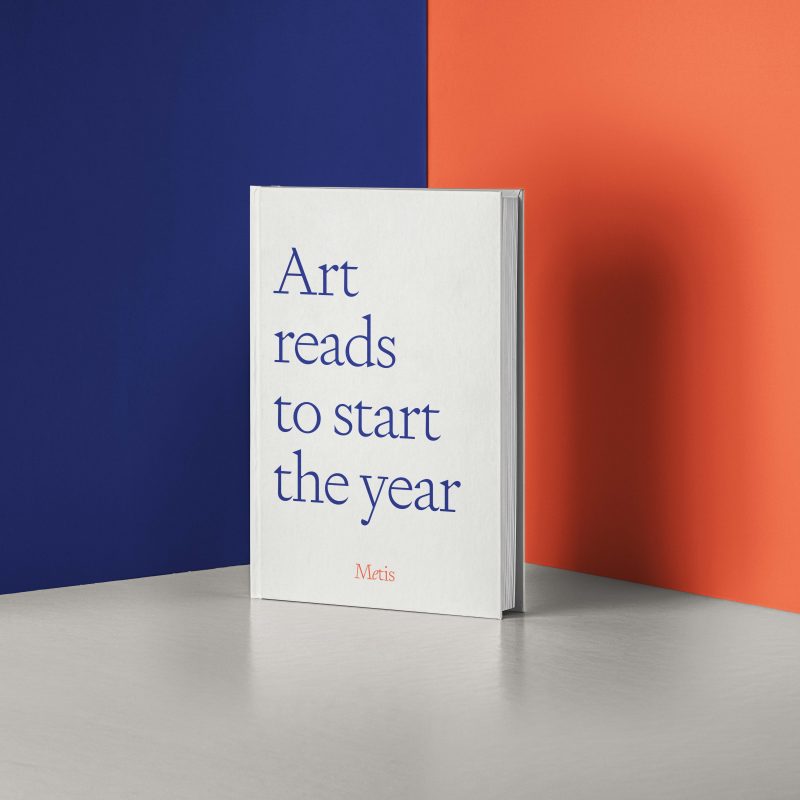Whether practicing on the native continent or elsewhere as its diaspora, African artists are an energized force. 2021 marks approximately a decade of buzz around African art on an international scale, marked by fairs such as 1-54 Contemporary African Art Fair and many successful auctions. While African art continues to mature in the global art ecosystem, here are some of the artists that lead the way.
El Anatsui

El Anatsui, ‘Tsiatsia – Searching for Connection’, 2013, Aluminium and copper wire, 156 x 250 cm. Image courtesy of October Gallery, London.
El Anatsui is a Ghanaian sculptor who lives and works in Nigeria. Having worked with a diversity of materials over the years, the artist is most well known today for his larger-than-life installations that attest to his ability to transform the everyday into the elevated. Recently fetching record prices at auction, the artist has developed a vast oeuvre that spans over 40 years.
Julie Mehretu
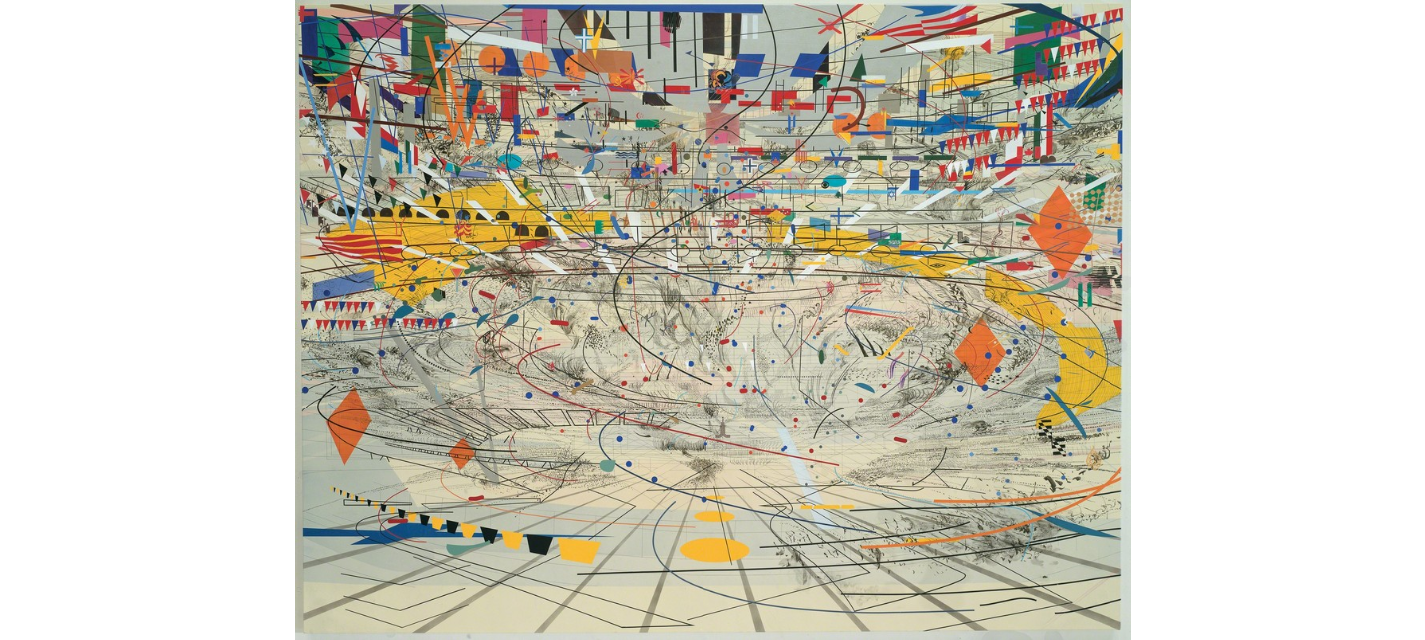
Julie Mehretu, ‘Stadia II’, 2004, Ink and acrylic on canvas, 272.73 x 355.92 x 5.71 cm. Image courtesy of Julie Mehretu.
Ethiopian-American painter Julie Mehretu has become renown for her large-scale gestural works of art which sometimes cover vast wall space. Whether drawings or meticulously layered paintings, her artworks carry a conceptual density that is delivered through shapes, lines and layers mirroring the complexity of our lived experiences. She has described her works as ‘story maps of no location’, leaving the viewer to navigate the experience of her works with free will.
Ben Enwonwu
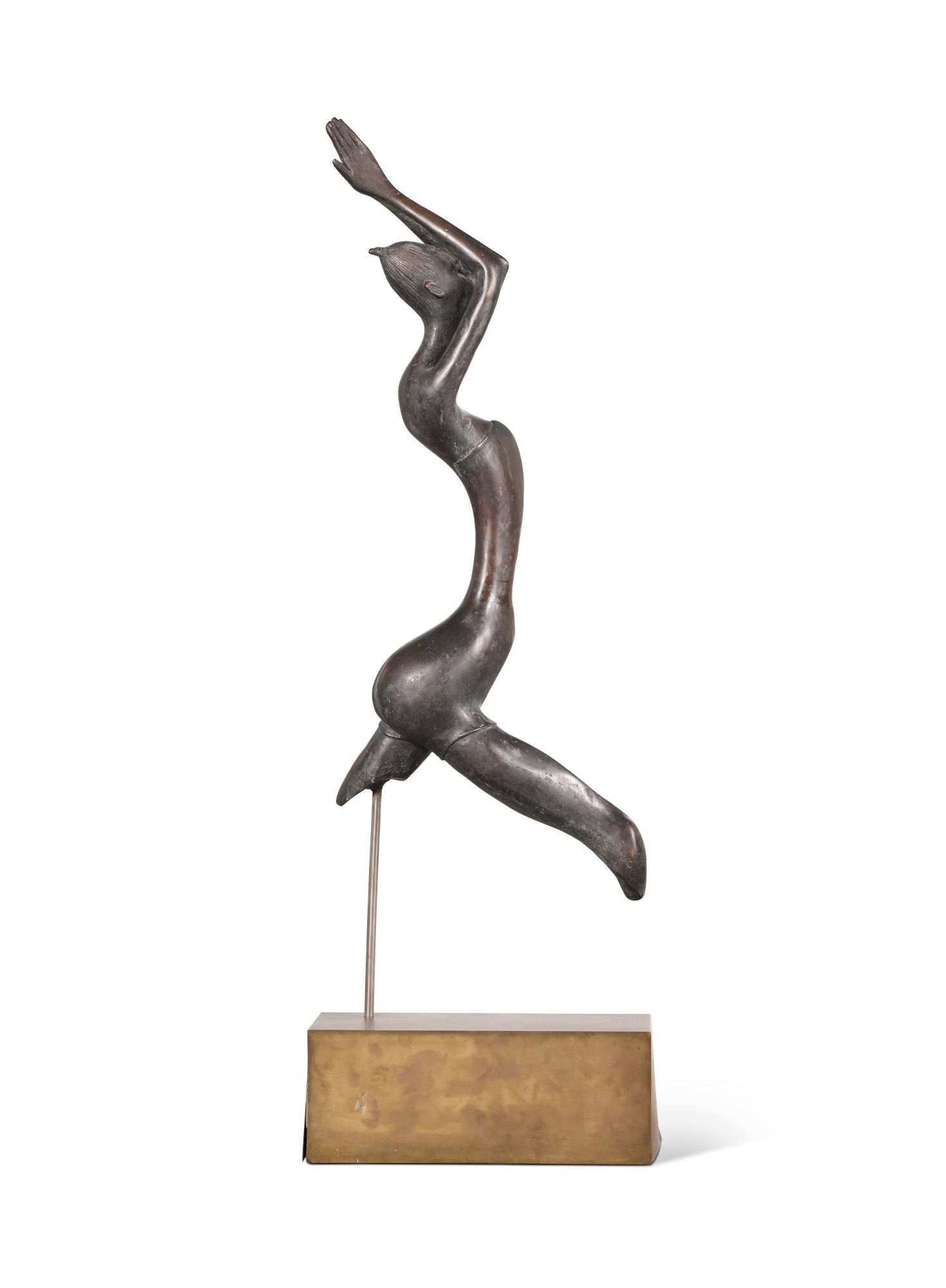
Ben Enwonwu, ‘AFRICA DANCES’, 1980, Bronze, 105 x 16 x 33 cm. Image courtesy of Sotheby’s.
The late Nigerian painter and sculptor Ben Ewnonwu was a modernist pioneer who represented his home continent in its raw glory. Practicing a refined figurative self-expression, Enonwu is considered a master in his field and is widely loved by established African collectors. His sculptural works carry a very different palette and form to his paintings, however both carry themes central to his practice which is a celebration of Africa.
Nú Barreto

Nú Barreto, ‘It’s going to go’, 2018, Acrylic on canvas, cowries and various objects, 340 x 529 cm. Image courtesy of Atelier 80.
Nú Barreto’s works focus on themes of social justice that to this day, remain at the forefront of current affairs across Africa and in other continents where its diaspora lives. Amongst these themes are identity, injustice, representation, oppression and human rights activism. To arrive at an expressive form that is very reflective of the political mood across the board for African individuals, the artist has moved from photography to collages and working with found materials. This has culminated in charged political art pieces such as It’s going to go shown above.
Wangechi Mutu
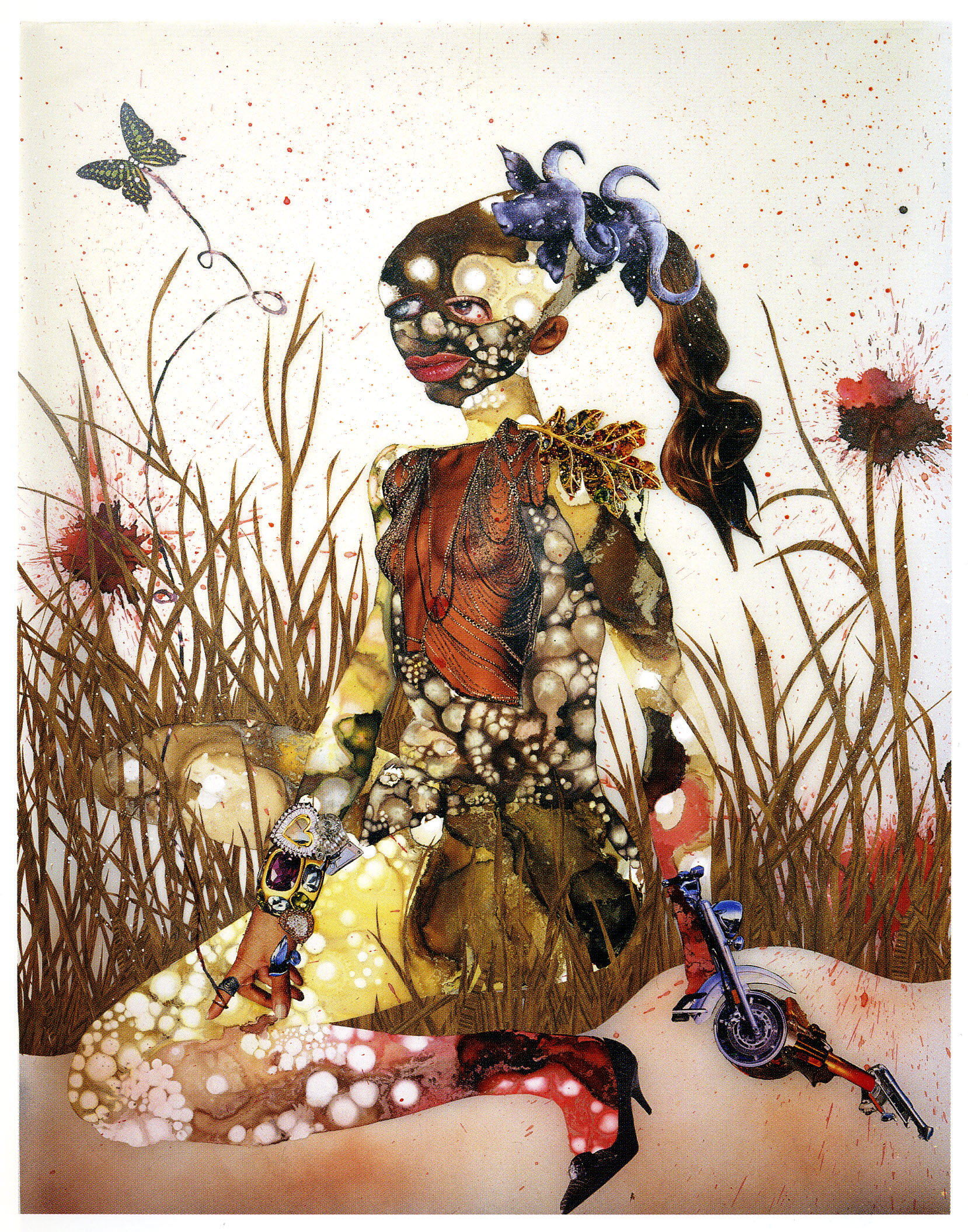
Wangechi Mutu, ‘in killing fields sweet butterfly ascend’, 2003, ink, collage, contact paper on mylar, 104 x 79 cm. Image courtesy of Rosenfeld Gallery.
Wangechi Mutu creates collages using images from torn up magazines, paint and found materials. The resulting artworks come across both as futuristic and archival, with strong references to ancient symbols and shapes. Like many of her African counterparts, Mutu is deeply interested in a contemporary treatment of black portraiture. The female body, and how it has been represented and transformed by external factors such as colonial powers, takes center-stage just like in this collage, in killing fields sweet butterfly ascend.
John Akomfrah
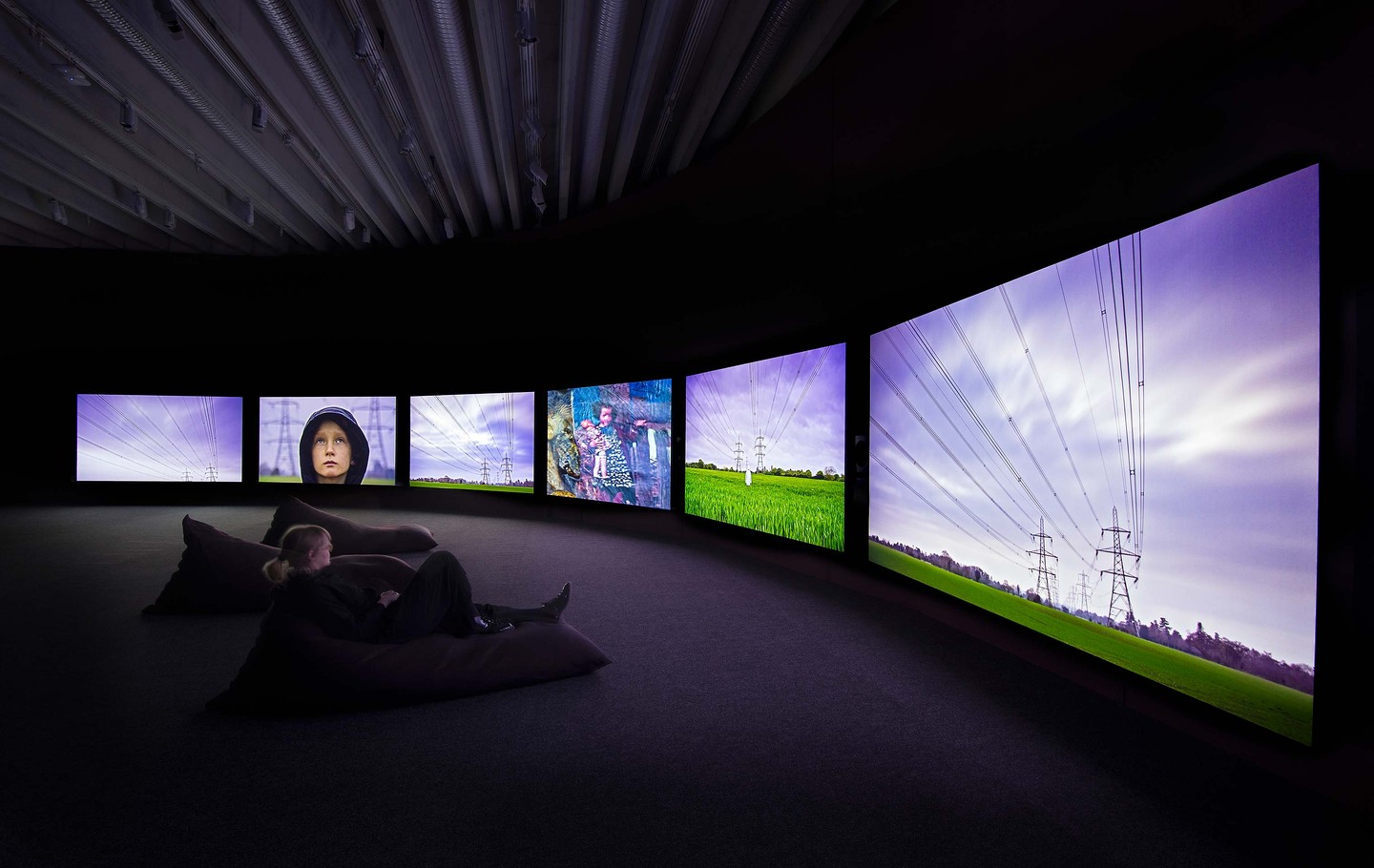
John Akomfrah, Installation view of ‘Purple’, 2017, 6 channel HD colour video installation, 15.1 surround sound, 62 minutes. Image courtesy of Mikael Lundgren and Bildmuseet at Umeå University.
John Akomfrah is a multi-disciplinary artist and filmmaker, whose works contemplate human crises. Whether it is a natural disaster, deep social upheaval or economic turmoil, these darker events in human history are something that Akomfrah helps his audience navigate. In Four Nocturnes, which is the third instalment of a trilogy of films including Vertigo Sea and Purple (pictured above), the focus is on the destructive relationship between us and the natural world. By using time as a poetic device in his new media works, Akomfrah guides us to understand the ‘bigger picture’ by framing crises in new ways.






